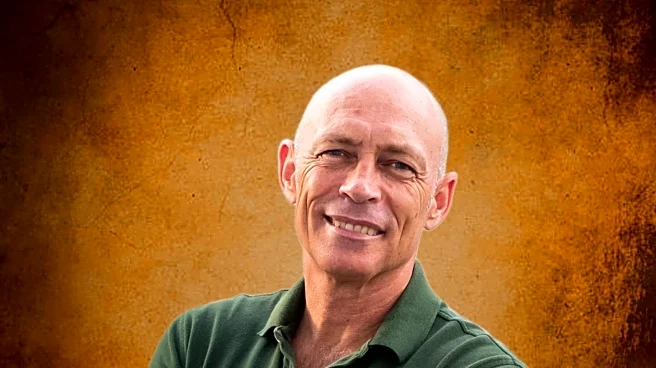What's Happening?
Dr. Peter Attia, a prominent figure in longevity medicine, is advocating for a shift in how health and longevity are approached, emphasizing the importance of physical fitness over traditional medical
metrics. Attia, who operates a high-end practice with fewer than 75 patients, argues that cardiorespiratory fitness, muscle mass, and strength are more predictive of lifespan than cholesterol or blood pressure. He highlights the VO2 max test as a critical indicator of overall health, suggesting that it provides a better measure of longevity potential. Attia's approach, which he terms 'Medicine 3.0,' focuses on prevention and long-term health strategies, including rigorous physical training akin to athletic preparation for advanced age. His methods, which include controversial practices like full-body MRIs and genetic testing, have attracted both high-profile clients and skepticism from some in the medical community.
Why It's Important?
Dr. Attia's approach represents a significant shift in the healthcare paradigm, emphasizing proactive health management and prevention over reactive treatment. This could influence how healthcare providers and patients prioritize health metrics, potentially leading to broader adoption of fitness-based health assessments. The focus on VO2 max and physical fitness could drive changes in public health policies and insurance coverage, encouraging more comprehensive fitness evaluations. However, the high cost of Attia's program, which can reach six figures, raises questions about accessibility and equity in healthcare. If his methods prove effective, they could challenge existing healthcare models and inspire new approaches to aging and longevity.
What's Next?
Dr. Attia plans to launch a digital health app next year, aiming to make his longevity strategies more accessible. This app could democratize access to his methods, allowing a broader audience to engage with his fitness-focused approach to health. As his ideas gain traction, there may be increased interest from healthcare providers and insurers in incorporating fitness metrics into standard health assessments. Additionally, ongoing debates about the efficacy and ethics of his methods, particularly regarding expensive and controversial tests, are likely to continue as more data becomes available.
Beyond the Headlines
Attia's emphasis on fitness and prevention highlights a cultural shift towards valuing quality of life in later years. His approach challenges traditional medical education, which often overlooks exercise and nutrition, suggesting a need for reform in medical training. The ethical implications of his high-cost program also raise questions about healthcare accessibility and the potential for a two-tiered system where only the wealthy can afford comprehensive longevity care. As society grapples with an aging population, Attia's methods could influence broader discussions on how to best support healthy aging.











